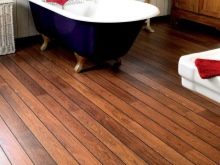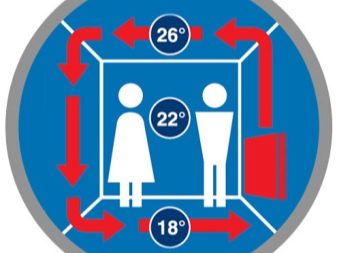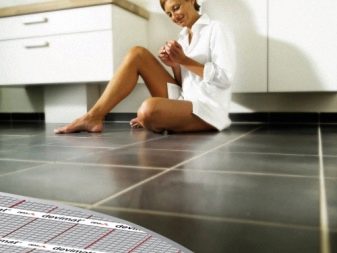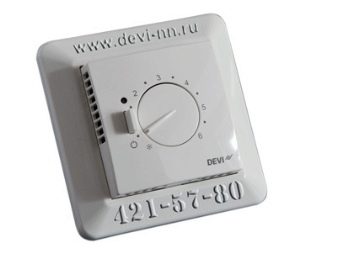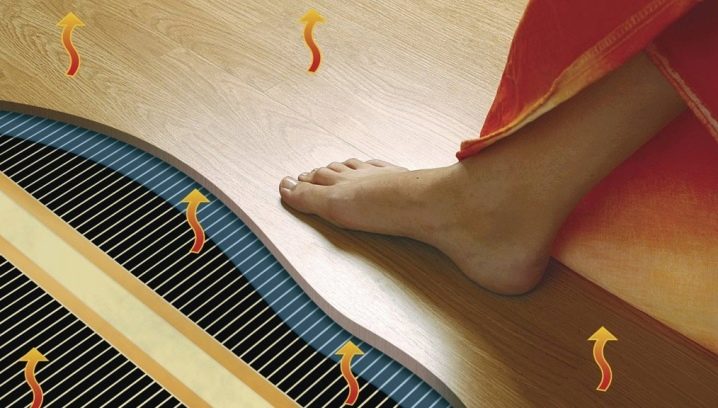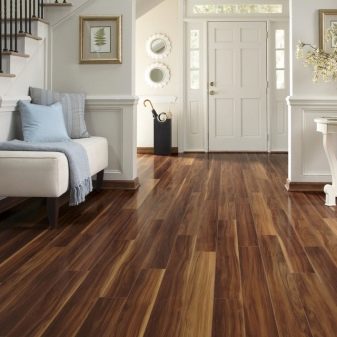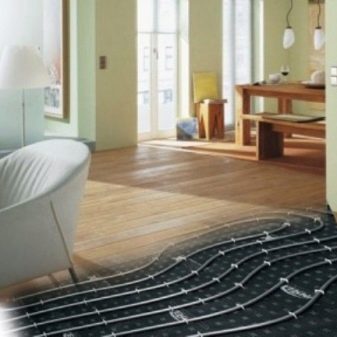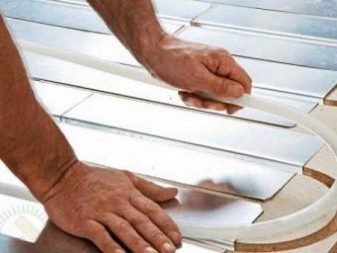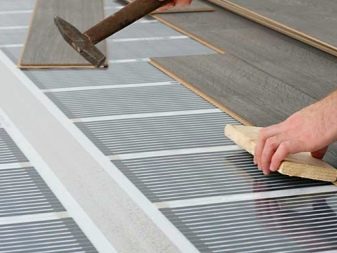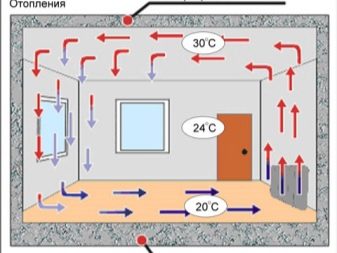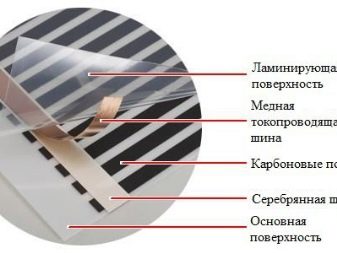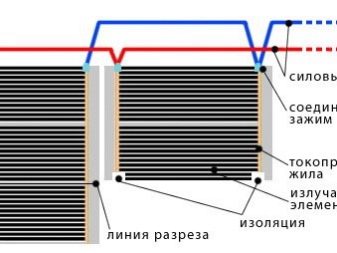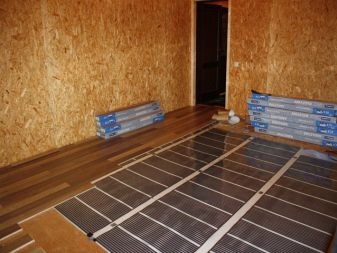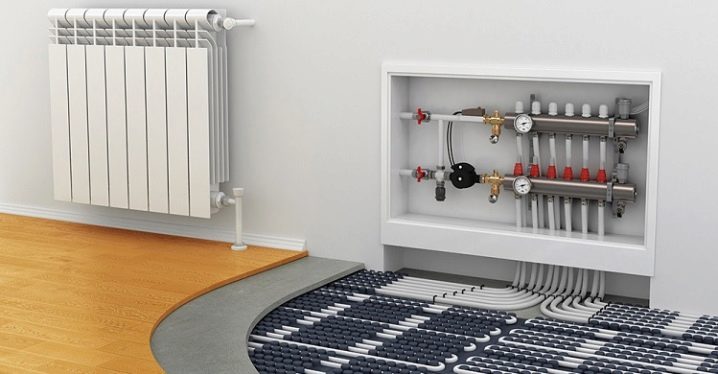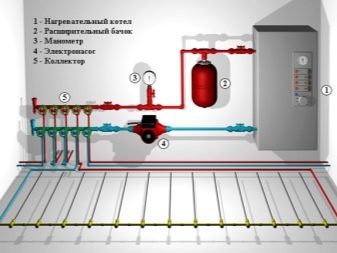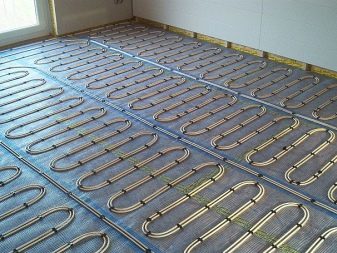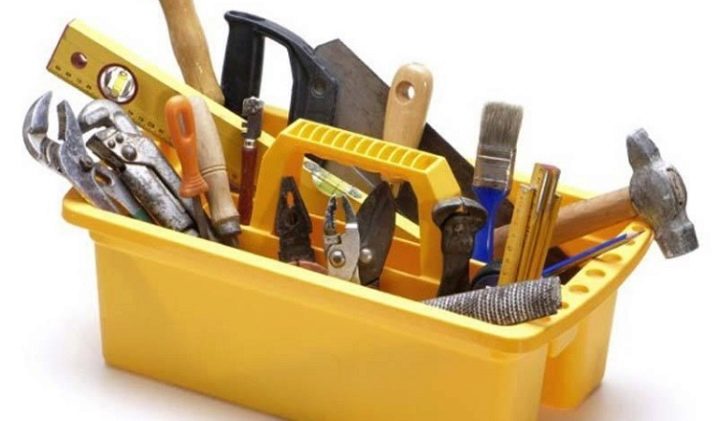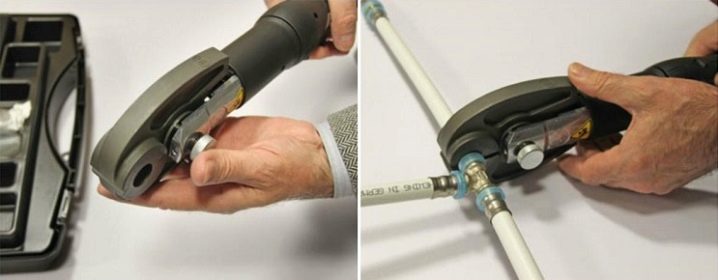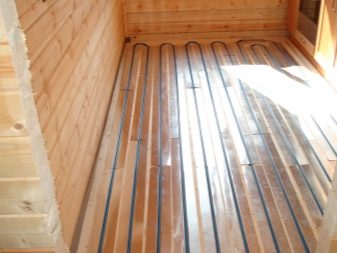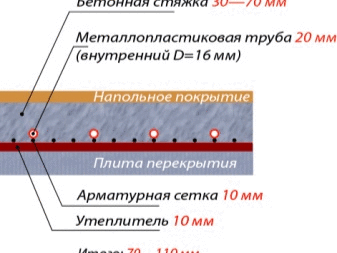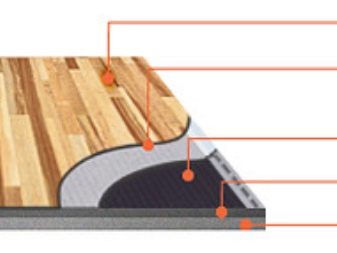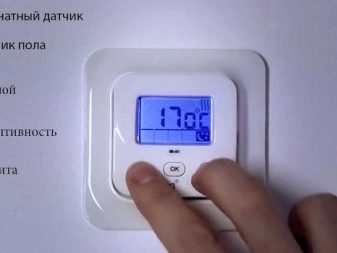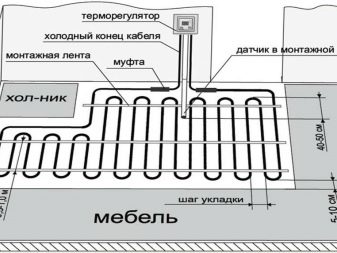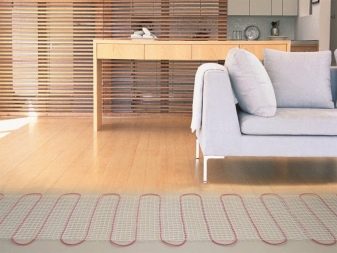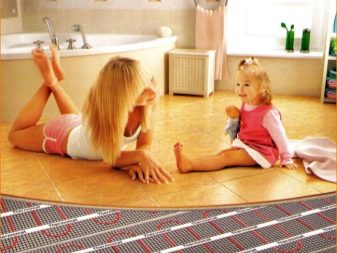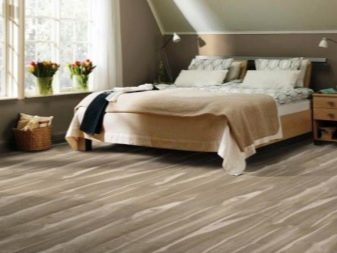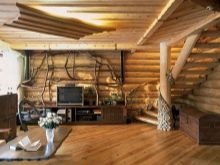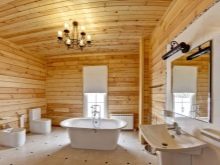Types and technology of laying a warm floor in a wooden house
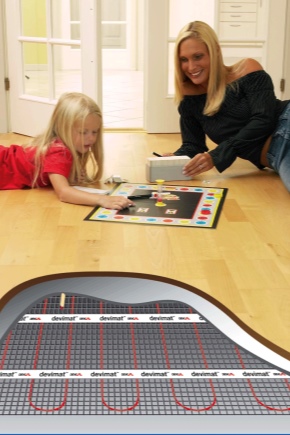
Today, most people prefer environmentally friendly materials. The wooden floor in the house is not just an interior decoration, it also allows air to circulate indoors. But many people have difficulties with the choice of coverage, because it must be not only beautiful, but also warm. Everyone is fully able to arrange heated floors in a wooden house. There are several technologies, which will be discussed in more detail in this article.
Features: pros and cons
It's no secret that warm air always comes from the bottom up, which is why it is always warmer on the second floor of a country house than on the first floor.At the stage of construction of a private cottage, the owner himself selects the method of heating the room. If desired, it can easily replace radiators with a warm floor. And even the tenants of the apartments can install this design as a secondary or main source of heat.
The effectiveness of a warm floor is achieved thanks to a number of advantages that it has:
- does not occupy the free space of the room;
- The batteries do not heat the rooms evenly, which cannot be said of a warm field. It will not cause problems for people with allergies and asthma;
- does not overdry air, providing the room with the necessary level of humidity;
- heat transmits the path of radiation, rather than convection, which has a positive effect on the body of residents;
- compared to batteries, the floor heats the room much faster;
- heating components are carefully hidden and do not spoil the appearance of the room.
But there are a few drawbacks.
Depending on the type of system, there are minuses:
- With the installation of a heated floor, energy costs increase significantly, but in the absence of a house owner, the floor temperature can be reduced, and in this situation you can, on the contrary, save money;
- electrical networks in old houses are not designed for high loads;
- using a heated system increases the level of electromagnetic radiation. It is believed that it negatively affects the human body, but this fact has not yet been proved;
- if they turn off electricity, the heated floor stops its work, and if it is the only source of heat in the house, then there is a huge risk of freezing;
- minus water floor is time-consuming installation;
- The high cost of installing a water heating system makes many people think about its necessity.
If you are planning to install a heated floor, you should carefully consider the choice of flooring. So, for example, under the influence of elevated temperatures, the coating of wood can deteriorate, tile or laminate is better suited. That is why when choosing a material it is necessary to consult with experts.
What is best for a private house?
Owners of private houses have the right to choose the type of heating and water supply. Unlike apartments, where the operation of a water heated floor is impossible, everything is permissible in your own home.You can heat the room with batteries, warm floor or use a combined system.
To understand what is better, you need to understand the advantages and disadvantages of these types of heating.
The traditional heating system includes the operation of the boiler and radiators. It is also sometimes necessary to use a convector, thermal panels and other additional elements. This technology provides a good effect in the usual rotation of the water, and in the operation of pumps.
The main advantage of this device is simple installation and maintenance of the main pipeline. If you decide to use batteries as your main source of heat, then the only problem you will encounter is the creation of openings in the walls to hold the pipe.
If the rooms are large, then additional elements may be needed, for example, a convector.
Water floor heating in a country house joins the heating system in a similar way, but has more advantages than heating with batteries. Heated floor allows heated air to heat a room of any size, even a large area. A convector warms the room unevenly, raising the warm air up.Moreover, the water system is much more economical in terms of energy consumption.
Another main advantage of the warm floor is that it does not take place in the room, all its elements will be carefully hidden under the floor covering. Purchase of materials for its installation will be cheaper than materials for radiator heating. In addition, the convector desiccates the air, but the heated floor retains the optimum humidity in the room.
Device
The main elements of the electric floor cable is a heating wire that can convert electricity into heat.
It includes:
- several lived, which conduct current;
- polyester film;
- fiberglass reinforcement;
- aluminum screen;
- copper conductors;
- protective PVC layer.
Among all types of such systems with heating, cable has the most time-consuming installation. And in the completion of the installation it is necessary to fill the screed.
The design of the infrared floor implies the presence of a film of two layers with carbon heating components. The approximate thickness is 0.5 mm, which maintains the height of the ceiling.Infrared systems are economical, which cannot be said about other heating methods. Installation of such a system is extremely simple, and the flooring can be laid without pouring a screed.
Water heated floor has a different device. So that the temperature is evenly distributed, the pipes are stacked snake close to each other or in the form of a spiral. A mandatory nuance of the installation is the absence of any connections between the pipes. Otherwise, these nodes can fail.
The surface temperature of the water floors is set using a special sensor.
The device of such a system includes the following elements:
- heating boiler;
- water pump;
- collector;
- check valve (return valve).
The boiler raises the temperature of the coolant, it can function from electricity, as well as from various types of fuel - gas, diesel, firewood and others. In order for the heat transfer to be at the highest level, it is imperative that you install the air vent valve, the expansion tank and the drain pipe.
Take into account that warm water floors heat up for a long time, and when you turn off the system, they will keep the rooms warm for a long time.
Another distinguishing characteristic of this system is that the temperature at the feet level will be higher than the temperature at the head level. Thus, a certain microclimate is created in which it will be comfortable for all people to be.
Required tools
When planning the installation of a heated floor, you need to take care in advance of acquiring the right tools and all the necessary components.
So, to do all the work yourself, prepare the following:
- roulette - allows you to mark up the installation of floors;
- pliers with which you can grab any object;
- level - a tool designed to determine the horizontal and vertical planes;
- adjustable wrenches - designed to work with nuts, bolts and other fasteners;
- spanners - will help tighten or loosen the bolts, nuts, coupling;
- screwdrivers - such a tool is needed to tighten the bolts or screws;
- Grinder - a tool with a rotating disk, used for polishing, grinding, cutting metal or cutting wood;
- soldering iron - one of the main tools that is used when connecting polypropylene pipes into a single system;
- perforator - used for mounting a temperature sensor for a heated floor to a wall and thermostats for a water floor;
- gas burner - needed for heating and connecting some components, for drying the surface;
- pipe cutter - this tool will be needed if you need to dismantle the heating system or shorten the pipes;
- metal pipe cutter - similar to a pipe cutter and used for shortening pipes.
How to do?
Many, in order to save, decide to install a warm floor on their own, having previously studied the ways of laying. Make it not as difficult as it seems at first glance. Each type of underfloor heating is distinguished by its sequence and peculiarities of work.
For example, the installation of a cable floor is as follows:
- The first step is to create a cable laying pattern and select the area for the sensor, the thermostat and the floor connection;
- heat insulation with reflector is installed on the base;
- it is necessary to conduct the cables, also a thermoregulation system is installed that protects the structure from overheating;
- then concrete is poured on the ground, lag or concrete base.The main requirement at this stage is to prevent the formation of voids;
- not less than a month after the tie, the system should be checked for functionality.
In a wooden house, the infrared floor will be the ideal choice, although it is also suitable for concrete. A flooring with this technology, you can choose any.
The main stages of the installation of infrared floor heating on wooden lags include:
- if the surface is defective, it is recommended to perform a tie and wait until the base is completely dry;
- a film is being laid with heating components, a temperature controller and a feed temperature sensor are connected;
- the system is checked for operability, if shortcomings are identified, they are eliminated;
- after checking, all heating parts are covered with a film or filled with a solution;
- after drying, a floor covering of any kind is put: tile, laminate and others.
One of the most popular types of warm floor in a country house with wooden floors is a water floor.
The main stages of its installation include the following works:
- installation of polypropylene riser and pie warm floor;
- a pipe wiring diagram is drawn up;
- laying waterproofing, the strip which stacked overlap, and the seams are connected tightly;
- a roughing screed is being performed, the optimum level of which should be 5 cm below the level of the finished floor;
- foiled insulation is laid, its joints are glued together with aluminum tape;
- conducting polypropylene pipe according to the scheme, it is connected to the risers, where the flow and return flow are located, through a regulating screen without a pump;
- be sure to check the system, whether it is leaking, whether it is properly filled and installed; after checking, drain the water;
- final screed, the surface of which must be flat. Modern technology allows you to install underfloor heating and without screed.
These are brief descriptions of the processes that will help you cope with the installation work yourself.
Kinds
Heated floor design is a combination of heating components that are under the floor covering and evenly heat its entire surface. Today there are two types of warm floor:
- electric - heat is transferred from the heating of the conductors;
- water. Heat is supplied from the heated water, which is filled with metal or plastic pipes. Such a floor option cannot be mounted in apartments, but it is great for country houses, as it has a number of advantages.
Electric heated floors include heating element - cable, film and thermomats.
Between themselves, they differ in the features of the installation and the level of energy consumption, which the manufacturers each time try to reduce more and more, and they achieve their goals.
Water floors also differ installation technology:
- concrete technology - heating parts are hidden under the monolithic concrete screed;
- flooring - several layers of various materials are laid.
The most economical is water floor, which operates from a gas boiler.
The room
In a private house, each owner seeks to create the most comfortable living conditions. Comfort and safety is more dependent on heating. Previously, radiator batteries were used exclusively, but today most people opt for warm floors.Thanks to this heating, everyone in the house can walk barefoot without fear of catching cold or freezing.
After installation of warm floors drafts disappear, and the air is heated evenly.
Heated floors can well heat even large rooms in the country. But note that the use of this heating system as the main source of heating will be effective only if the house has good thermal insulation. If it is not insulated, then all the heat that the room provides the floor will go through the window openings and floors.
Reviews
The heat-insulated floor of any kind began to win huge popularity for a long time. On various forums and websites you can read a lot of reviews of those people who have already tried the effect of such heating on themselves, and almost all of them are positive. Many use underfloor heating as additional heating in the bathroom or bedroom. This is indicated by the owners of both private houses and apartments.
You can quietly walk around the rooms barefoot in both summer and winter. And with the help of a special sensor, you can independently set the optimum heating temperature.
Successful examples and options
Modern warm floors can be safely laid under any floor covering, including under the laminate or carpet. If you choose a quality coating, then even after a few years it will look like new. But it is not recommended to choose cheap materials, otherwise they may become unsuitable and deteriorate from elevated temperatures. And the installation of floor heating can be done independently, because it is not necessary to make a concrete screed, so you can do without the help of specialists.
Warm floors function from electricity, from different types of fuel or from the boiler. The absence of rather large batteries allows you to significantly save space in the room. This type of heating will not only heat the legs, it will evenly distribute heat in the room.
Underfloor heating is a great way to heat a room of any size, and you can also install it yourself, saving money. With such a convenient heating system, heat will always reign in your home.
For how to make a water-heated floor in a wooden house, see this video.

